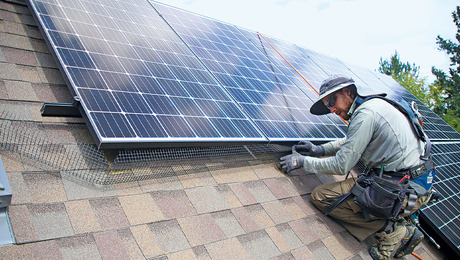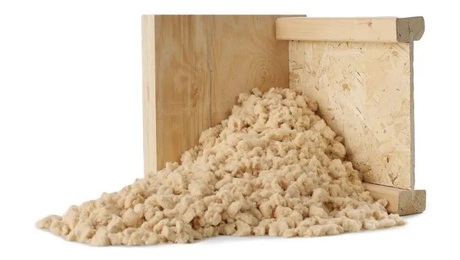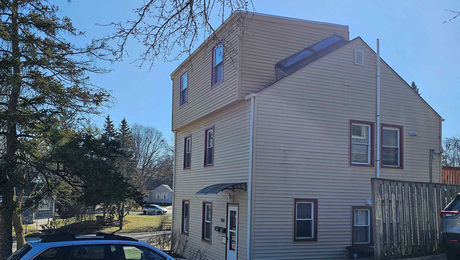Shelter is essential to human survival. University of Southern California engineering professor Behrokh Khoshnevis believes, however, that our methods of construction are antiquated. He argues that the building industry is slow, labor intensive, hazardous, wasteful, and expensive.
Computer-aided design and computer-aided manufacturing are a way of harnessing technology to build housing quickly, at a lower cost, and with unparalleled design flexibility. Rather than forcing workers out of the field, Khoshnevis says, the adoption of this new approach could actually create jobs, especially for older workers who are no longer able to work in construction.
https://youtube.com/watch?v=31jkjsZPjtQ%3Frel%3D0
An approach called “Contour Crafting” represents a new direction for residential construction. It’s essentially a way of ramping up 3D printing to the scale of a two-story house and using robotics and computer programming to build cheaper, stronger houses in virtually any design. This technique has the potential to build a 2500-sq.-ft. house in less than 24 hours at a lower cost than conventional construction and with less risk to workers.
https://youtube.com/watch?v=-yv-IWdSdns%3Frel%3D0
Computer-guided nozzles are capable of quickly creating high-strength walls with fast-drying concrete.
https://youtube.com/watch?v=JdbJP8Gxqog%3Frel%3D0
A robotic “house printer” is a chance to rethink how our cities are created. As the world’s population continues to surge toward 9 billion or more by the middle of the century, more people will flock to megacities. They and others will need new places to live. Working hand-in-hand with construction workers, these devices have the potential to significantly speed up the building process while opening the door to “extraordinary structures never seen before.” For a hint of where this could lead, read about efforts to create the Landscape House.
Fine Homebuilding Recommended Products
Fine Homebuilding receives a commission for items purchased through links on this site, including Amazon Associates and other affiliate advertising programs.

8067 All-Weather Flashing Tape

Handy Heat Gun

Reliable Crimp Connectors



























View Comments
Thanks for a thoughtful and well-researched article, Scott. It's hard to argue that this technology could someday be a great way to mass-construct affordable housing. But what will the living spaces be like? Cementitious building materials offer plasticity, but are they pleasant to live in?
Of greater concern to me is what happens to all those builders who are no longer needed to construct an automated house? In the third video the gent claims that using advanced technologies always results in more, better jobs down the road. Judged in millennia, maybe. But too-rapid and wrenching technological changes can also create massive unemployment and social dislocation for generations. Let's face it, the primary appeal of automated housing is cutting costs by cutting jobs--not unlike the Faustian bargain we made with computers, which allow corporations to merge companies, offshore operations and cut "redundant jobs." Redundant, if you not the one who has to feed a family.
I didn't intend this to become a rant. But this brave new world worries me, because nowhere do I see those generous souls--builders--whom you and I and Fine Homebuilding rely on so much for our raw materials--ideas and knowledge hard won in the field. To say nothing of their four-legged companions.
This technology may create a heavenly city of sorts. But, to paraphrase Mark Twain, if there are no dogs in heaven, then I don't want to go there.
This 3D house printer is a highly advanced piece of computerized machinery. Simply press the start button and stand back to watch as a brand new house is printed before your very eyes. With cutting edge CAD/CAM software to run the entire system, you can rest assured that nothing will go wrong %^$...will go wrong %^$...will go wrong %^$...will go wrong %^$...will go wrong %^$...will go wrong %^$.....will go wrong %^$...will go wrong %^$...will go wrong %^$...will go wrong %^$....will go wrong %^$...
:-) Matt Jackson
Ironically, from The Digital Jobsite (of all places)
May I direct your attention to the luddites and their destruction of automated looms as a standing example of why your opinions and attitudes on this are rooted in FUD. I'm sure you can google FUD if you don't know what it means, and don't still rely on the card catalog due to your mistrust of the interwebs.
This isn't the answer for every new home but i'd love to be able to afford a home of my own and not be in debt for 30 years. If I could rent/lease one of these machines and pay for the concrete to build my own design, that seems ideal. I'll still need plumbers and electricians and surveyors and permits and all of that, just not framing carpenters and shady contractors.
Okay, I'm an architect, so I have a vested interest in these whiz-bang developments, and therefore a peck of opinions. For instance, I am dismayed at the prospect of a built world made entirely of concrete or foam or whatever Cheez-Whiz noozle juice of the moment. It is far more than the great designs of the architects that defines true beauty in the built environment. What is missing from the equation is the subtle, yet pleasing variations borne of human hands that complete great projects; I am not willing or able to part ways with this very humane and human touch from our tradespersons. The mechanized kind of printer uniformity can't be good for innovation, emotions, or inspiration in our daily lives.
Oh yeah, then there's the part where we somehow scale this gizmo up to the size of a house or a skyscraper. Sure this is doable, but it will be real human hands that construct/install/operate this machine at each and every floor; the labor savings take a big hit on this front. Conversely, we already have a variation of this innovation in the form of CMU blocks, but alas these too require many hands to correctly assemble in the field, and the result is pretty utilitarian in form and use.
Lastly, and I'm limiting my comments out of deference to my fellow readers, is that the concrete Cheez-Whiz of this scheme is not even close to being a green product. Concrete is 2nd only to coal-fired power plants in its carbon footprint, so the concrete printer solution must be limited to a pretty limited set of scenarios.
It seems more likely to me that we'll see a robotic vector where human operators guide big robots that take care of the heavy lifting and very repetitive operations we currently utilize and with the same unitized materials that we are all familiar with. For instance, stud framing in large and simple configurations, and sheet rock installation and finishing (depending on the desired finish look and feel) would be probable candidates, as well as similarly simplistic painting operations. Roofing could be a good candidate as well, but these operations are all a long way off from "printer" solutions, thank goodness.
After listening to this presentation my blood was just boiling. As a skilled tradesman and as a scholar this man insulted my intelligence in more ways than I care to say. I realise it was only a short spiel but I really wish that he would have used real numbers and facts instead of conjecture and insinuation to back up his claims that ALL conventional construction methods are fundamentally evil. Even useing Maslow was a pretty low attept to legitimize the nobility of his intentions, but, the problem with the hierarchy is that even below the most basic level there is an unspoken, underlying presupposition- that the person has the actual ability with which to aquire the necessities in question. I think that he fails to appreciate that the slums he shows are actually fulfilling that most basic need, though not in the way he would like, or think they deserve. I have to agree that the deplorable conditions should be suffered by no one, but, why are they there? More likely than not due to scarcity of employment, corrupt governments and corporations. If there was ever a beakon of hope for the most destitute it could be that at least they could swing a hammer to earn a living, but that is exactly what this man wants to take away from them, the last chance to be even a simple labourer, who by consequence will not be able to afford even one of these "cheaper" homes of his.
As far as basic aesthetics are concerned I have no doubt that the implementation of this type of manufacturing would necessarily result in aesthetic degradation as the form of products would continuously succumb to degradation as the limits of the manufacturing process dictated they must. The bulidings would get simpler and uglier, without character or intrinsic value because the processes just simply can't allow for anything 'more' to be made. The only tool that has unlimited creative potential is the human body, and instead of precluding the absolute lostness of the high skill and ablity of older generations why not promote the development and refinement of these skills in our contemporaries rather than putting our efforts into replacing them with dumbed-down machines doing overly simplified tasks providing us with a dissatisfying world to exist in.
The head-in-the clouds thinking of people like this is dangerous if taken for more than debate fodder and quite frankly I'm so put off by it that I wish one of these great engineers would finally build a machine that made these ridiculous arguments for them so that when they do we could just shut them off and throw them in the garbage instead of having to suffer thier naive opinions and worry that some poor smuck is being convinced by them.
After listening to this presentation my blood was just boiling. As a skilled tradesman and as a scholar this man insulted my intelligence in more ways than I care to say. I realise it was only a short spiel but I really wish that he would have used real numbers and facts instead of conjecture and insinuation to back up his claims that ALL conventional construction methods are fundamentally evil. Even useing Maslow was a pretty low attept to legitimize the nobility of his intentions, but, the problem with the hierarchy is that even below the most basic level there is an unspoken, underlying presupposition- that the person has the actual ability with which to aquire the necessities in question. I think that he fails to appreciate that the slums he shows are actually fulfilling that most basic need, though not in the way he would like, or think they deserve. I have to agree that the deplorable conditions should be suffered by no one, but, why are they there? More likely than not due to scarcity of employment, corrupt governments and corporations. If there was ever a beakon of hope for the most destitute it could be that at least they could swing a hammer to earn a living, but that is exactly what this man wants to take away from them, the last chance to be even a simple labourer, who by consequence will not be able to afford even one of these "cheaper" homes of his.
As far as basic aesthetics are concerned I have no doubt that the implementation of this type of manufacturing would necessarily result in aesthetic degradation as the form of products would continuously succumb to degradation as the limits of the manufacturing process dictated they must. The bulidings would get simpler and uglier, without character or intrinsic value because the processes just simply can't allow for anything 'more' to be made. The only tool that has unlimited creative potential is the human body, and instead of precluding the absolute lostness of the high skill and ablity of older generations why not promote the development and refinement of these skills in our contemporaries rather than putting our efforts into replacing them with dumbed-down machines doing overly simplified tasks providing us with a dissatisfying world to exist in.
The head-in-the clouds thinking of people like this is dangerous if taken for more than debate fodder and quite frankly I'm so put off by it that I wish one of these great engineers would finally build a machine that made these ridiculous arguments for them so that when they do we could just shut them off and throw them in the garbage instead of having to suffer thier naive opinions and worry that some poor smuck is being convinced by them.
"potential to build a 2500-sq.-ft. house in less than 24 hours at a lower cost than conventional construction and with less risk to workers"
It seems like a reputable subscription trade magazine can do better than repeat bullshit like this. The 3d printing concrete industry has decided its ethical to claim that they have built a house in x amount of time, when all they have done is print a foundation and first floor walls. You should have more respect for your readers than to publish this marketing sillyness.